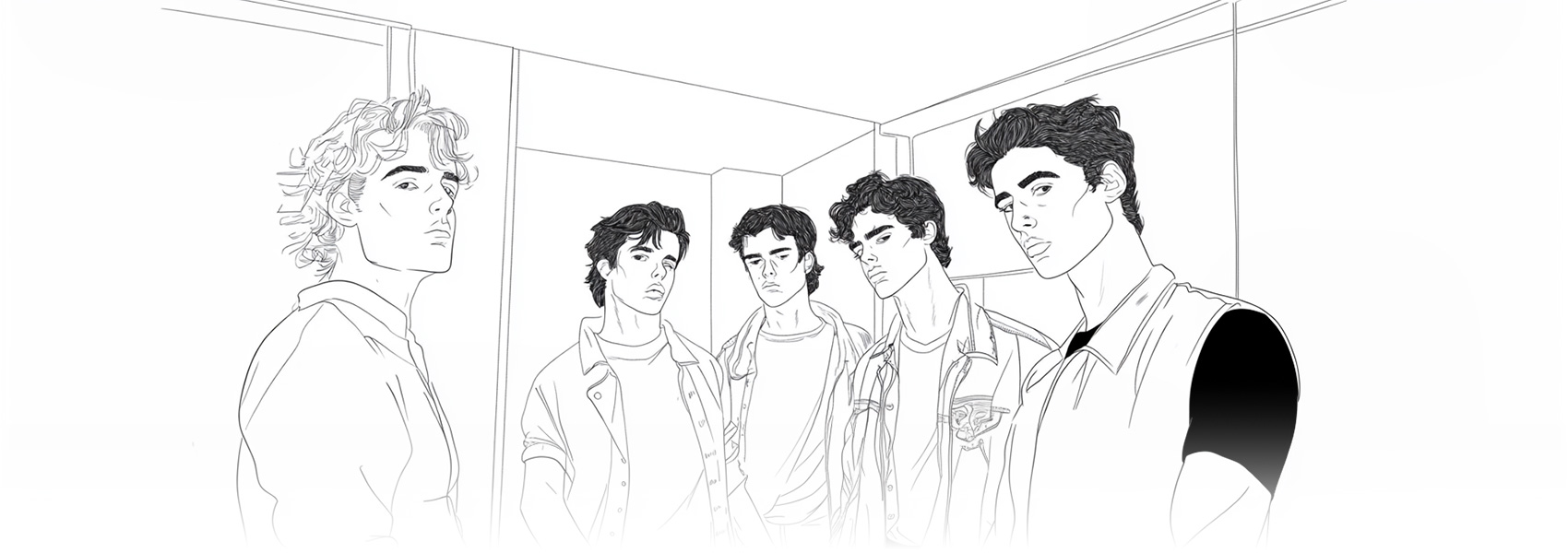
S.E. Hinton’s The Outsiders (1967) is a groundbreaking coming-of-age novel that explores the raw realities of teenage life, loyalty, and societal division. Written when Hinton was just 16, this enduring classic resonates with readers for its authentic portrayal of adolescence, brotherhood, and the quest for identity amid violence and prejudice. Set in 1960s Oklahoma, the story follows Ponyboy Curtis and his gang of “Greasers” as they clash with the affluent “Socs” (Socials), unraveling themes of class conflict, loss of innocence, and the fragile beauty of youth. A staple in classrooms worldwide, The Outsiders remains a poignant reminder that “things are rough all over.”
The novel opens with 14-year-old Ponyboy Curtis, a sensitive Greaser from Tulsa’s working-class East Side. Orphaned and living with his older brothers Darry and Sodapop, Ponyboy navigates a world defined by rivalry between the Greasers (known for their long hair, leather jackets, and toughness) and the Socs, wealthy teens from the West Side who terrorize Greasers for sport.
Tensions escalate when Ponyboy and his best friend Johnny Cade, a timid boy scarred by abuse, are ambushed by Socs. In self-defense, Johnny fatally stabs Bob Sheldon, a Soc, forcing the boys to flee to an abandoned church. Hiding there, they bond over poetry (Gone with the Wind) and sunsets, symbolizing fleeting moments of peace.
A turning point occurs when the church catches fire during a visit, trapping children inside. Ponyboy and Johnny rescue them, but Johnny suffers severe burns. As the boys are hailed as heroes, Johnny’s dying words—“Stay gold, Ponyboy”—reference Robert Frost’s poem Nothing Gold Can Stay, underscoring the novel’s meditation on impermanence and innocence lost.
The Greasers and Socs agree to a final “rumble” to settle scores. The Greasers win, but celebrations are cut short by Johnny’s death and the suicide of Dallas Winston (“Dally”), a hardened Greaser whose tough exterior masks deep vulnerability. Dally, unable to cope with Johnny’s death, robs a store and is killed by police, symbolizing the destructive cycle of violence.
Ponyboy, grappling with trauma, channels his grief into writing the novel itself, framing the narrative as his “theme” for English class. The story closes with Ponyboy rediscovering hope, vowing to share Johnny’s message of empathy: “Stay gold.”
The Greaser-Soc rivalry mirrors real-world socioeconomic divides. The Socs’ privilege contrasts with the Greasers’ poverty, yet both groups face existential struggles. Hinton humanizes both sides, as Soc Cherry Valance admits: “Things are rough all over.”
The Greasers’ bond transcends blood. Darry’s strictness, Sodapop’s warmth, and the gang’s unwavering support for Johnny and Ponyboy illustrate how chosen family sustains them. Dally’s loyalty to Johnny—and his subsequent breakdown—highlights the cost of love in a harsh world.
Ponyboy’s journey from naivety to awareness reflects the universal loss of childhood idealism. Johnny’s death and Dally’s suicide force Ponyboy to confront mortality, while Frost’s poem laments the transient “gold” of innocence.
Ponyboy resists being labeled a “hood,” clinging to his love of literature and sunsets. His internal conflict—torn between Greaser loyalty and individual dreams—mirrors the teenage struggle for self-definition.
Written during the 1960s—a decade of civil rights movements and youth counterculture—The Outsiders critiques societal neglect of marginalized youth. Hinton’s portrayal of police brutality, economic disparity, and cyclical violence remains startlingly relevant, echoing modern movements like Black Lives Matter and debates over class inequality.
The novel’s exploration of mental health (Ponyboy’s PTSD, Johnny’s anxiety) aligns with today’s focus on adolescent well-being, while its anti-labeling message resonates in discussions of identity politics.
The Outsiders challenges readers to see beyond stereotypes—to recognize the shared humanity in Greasers, Socs, and everyone in between. Through Ponyboy’s eyes, we learn that pain and hope are universal currencies, and that even in a fractured world, connection is possible. As Ponyboy writes, “I could picture hundreds of boys living on the wrong sides of cities… hundreds of boys who maybe watched sunsets and looked at stars and ached for something better.”
Hinton’s masterpiece endures not just as a story of strife, but as a call to “stay gold”—to hold onto compassion, curiosity, and the courage to tell our own stories. A must-read for seekers of truth, advocates of empathy, and anyone who’s ever felt like an outsider.
